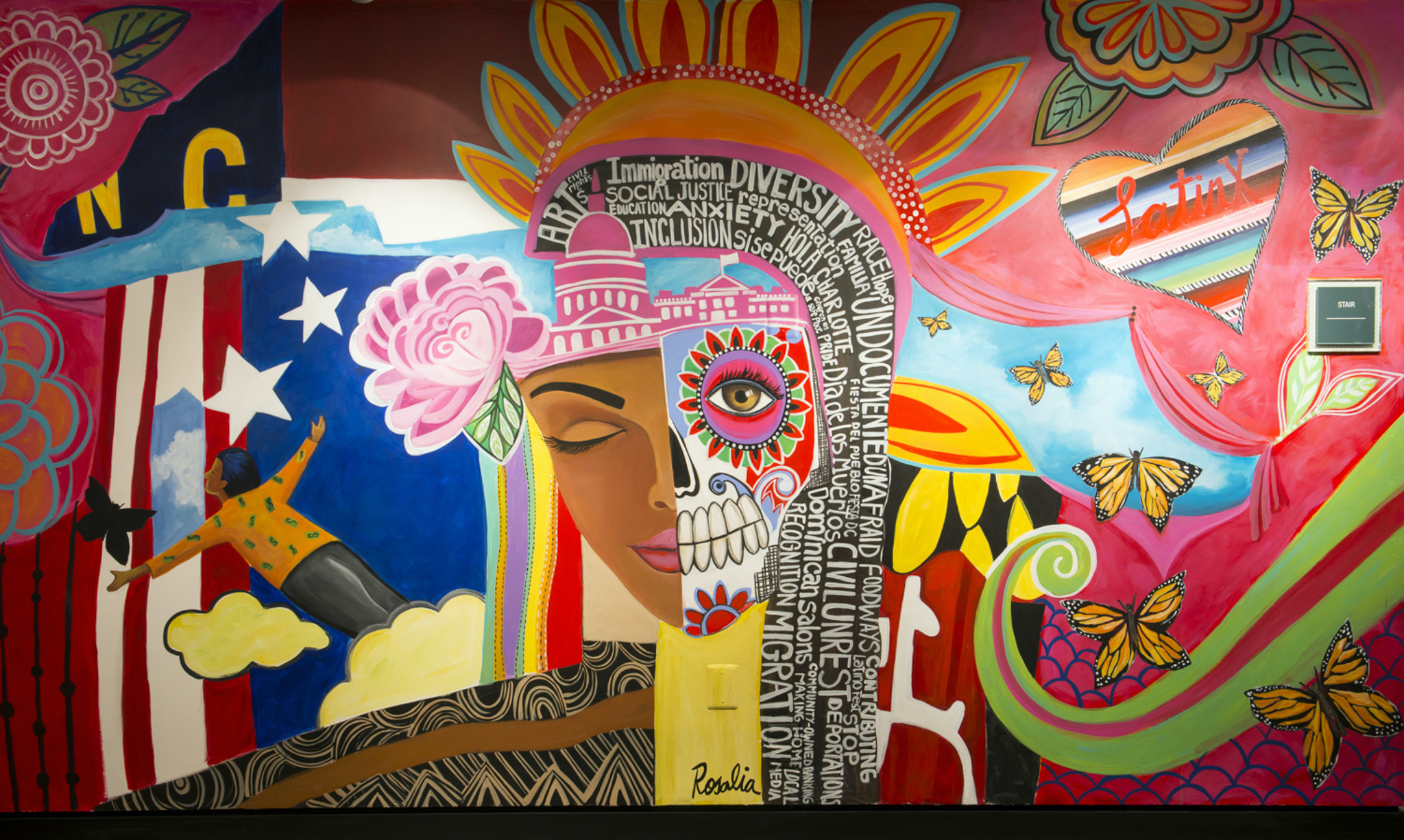The top 10 U.S. cities with the highest percentages of Latin American residents are, not surprisingly, Texas, California, and Florida. But none of them is featured in “Gateways/Portales” at the Smithsonian’s Anacostia Community Museum. The exhibition sticks closer to home, surveying the Latino surge in Washington and Baltimore, as well as Charlotte and Raleigh-Durham, N.C.
The museum’s galleries are packed with art and artifacts, photos and video, sociology, and journalism, as well as lots of text, all of it bilingual. Amid the profusion, the show does simplify one thing by employing a recently coined term: “Latinx.” It’s gender neutral and also suggests the diversity of heritages in a region that stretches from the Caribbean almost to Antarctica and includes people of indigenous, African, and European descent.
A section on U.S. census designations illustrates the complexity. The 2010 Census had separate categories for racial identity and “Hispanic, Latino or Spanish origin.” The text notes, “Latinx is not a race. However, a majority of Latinxs consider it part of their racial identity.”
The significant Latinx presence in the four locations is relatively recent. A section on street festivals establishes a rough chronology: D.C.’s Fiesta D.C. (originally the Latino Festival) began in 1970. Baltimore’s Latino Fest started a decade later. Raleigh’s La Fiesta del Pueblo dates to 1994, and “Hola Charlotte” to 2012.
That’s not the only difference. In Washington, Latinx newcomers moved mostly into neighborhoods that were predominantly African-American. (And by 2011, the city had the country’s largest percentage of foreign-born Latinx residents.) In Baltimore, they found a place in such districts as Highlandtown, known a generation ago for its Greek-rooted population. North Carolina, which is more rural, initially attracted many Latinx agricultural workers.
Among the exhibits is a pair of battered boots worn by a Mexican farmworker named Cornelio Campos, who continued that vocation in North Carolina. (Appropriately, Campos means “fields.”) They belonged to one individual but evoke anyone who has labored (or whose ancestors labored) in the dirt.
Despite hailing mostly from Spanish-speaking countries, the immigrants were unlike in many ways. Those differences grew as they merged into the cultures of their new homes. “Dominicans in D.C. identify as black more often than Dominicans in other places,” the show reports. A section on food spotlights a cookbook, Sandra A. Gutierrez’s “The New Southern-Latino Table,” that insists its readers have both a tortilla press and a biscuit cutter.
Assimilation isn’t always so simple. The show doesn’t directly mention the recent scapegoating of Latinx immigrants, but it does include a section on riots in the District’s Mount Pleasant neighborhood in 1991 and in Baltimore in 2015. The latter was in reaction to the death of Freddie Gray, an African American, while in police custody, which inspired supportive graffiti by Latinx Baltimore artists.
A separate section of the exhibition offers a footnote to the tensions that erupted along Mount Pleasant Street 26 years ago: A list of Latinx elected officials shows how few have achieved political power in the District. That part of the chronicle remains to be written.
“Gateways/Portales” is not an art exhibition, but it does include posters and paintings, notably several by Rosalia Torres-Weiner. The versatile Charlotte resident channels 20th-century Mexican muralist Diego Rivera in “Uprising Against ICE”; arms the Virgin of Guadalupe with an AK-47 in her Pop Art-style “Madre Protectora”; and matches a 3-D flowered mask with the Statue of Liberty’s crown in her magical-realist “Hispanics, the New Italians.”
There’s also a partly collaged self-portrait by Nicolás Shi, a veteran Washington artist with a background that’s complicated even by Latinx standards: He’s from El Salvador but of Chinese descent.
One of the niftiest artworks on display is shown only in a photograph since it’s too big to move (and is needed right where it is). The picture shows a Baltimore bus shelter that has been pierced by a giant red pushpin and emblazoned with this reminder: “Estamos aqui” — in English, “We are here.”
Adjacent galleries feature photographic portraits of Latinx notables such as D.C. poet and performer Quique Aviles, as well as sculptures by Derek Webster, a Honduras-born folk artist who spent much of his life in Chicago. Made of found objects and embellished with house paint and costume jewelry, the assemblages tell a story that can be read throughout the museum: a saga of strength, exuberance, and self-invention.
Gateways/Portales
Anacostia Community Museum, 1901 Fort Pl. SE. 202-633-4820. anacostia.si.edu.
Dates: Through Jan. 7 (Derek Webster sculptures on display through July 9).
Admission: Free.
Featured on Washington Post


